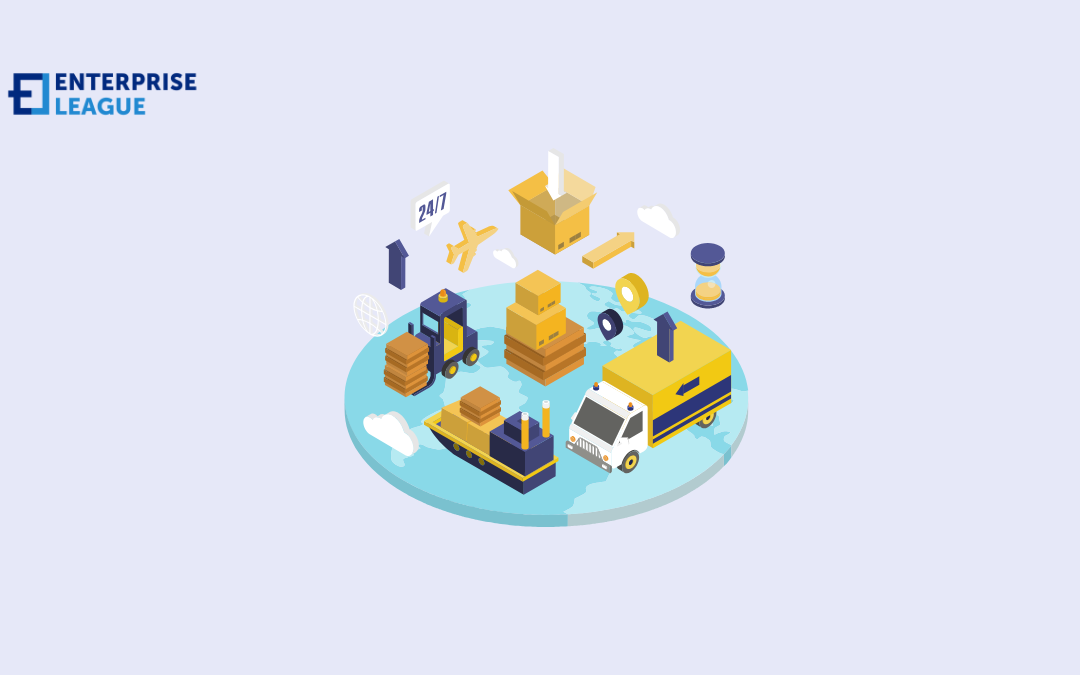Every year brings more tools and channels for business growth. Social media, new platforms, and marketing options keep expanding. At the same time, running a business becomes more difficult. Niches fill up quickly, competition intensifies, and even high-quality services often fail to stand out.
This is where mobile applications make a real difference. For small businesses and startups, an app can support internal processes, cut costs, attract new clients, and even help bring in skilled employees. In some cases, an app supports existing services. In others, it becomes the main product itself.
If this sounds too complex or expensive, it isn't. You don't need to create the next Uber. In many cases, all you really need is to define your niche and build a simple solution that fits your business model. You can pull it off with a small team or even solo.
To help you get started, we've gathered a list of practical and relevant mobile app ideas that work in 2025. These ideas don't require huge budgets or major tech experience, but they solve real problems and bring value to both businesses and users.
What small businesses need before developing an app
Before we move on to the list of mobile app ideas, let's briefly outline what a business needs to begin the development process.
- Start with a clear idea. Decide what your app does, who it serves, and which features it must include. Without that foundation, you'll lose focus and waste time. If you build an internal app for your team, say, a planner or task tracker, spell out the exact needs it covers. Does it assign tasks, manage deadlines, or track shifts? If you build the app for customers, choose its role: a digital storefront, a booking tool, or a platform that helps grow your business. Some apps act as interactive ads, while others let users place orders, sign up for services, or check their progress. Nail down these decisions before you dive into design or development.
- Next comes the budget. Review the price ranges offered by development studios. Rates can start at $2,000 and increase based on complexity. If you cannot commit that kind of money, consider the DIY route. Study the tools and resources required for independent work. Learn the basics of Figma to create your app's interface. Try platforms like Adalo that allow no-code or low-code development. Read the submission rules for both the App Store and Google Play so you understand the full publishing process. The path takes time and effort, but remains achievable.
- Before you build anything, research similar apps. Look for products in your niche. Study their functions, interfaces, and visual styles. Save examples of what you find effective or attractive. For example, many developers take inspiration from the clean design and simple navigation of apps like Clever Cleaner: iPhone Cleanup App. It stands out among other iPhone storage cleaners, even though it wasn't built by a big team. You can still draw ideas from such examples and shape your own product vision, whether you choose to develop it yourself or hand it over to a team.
Treat app development like a serious business project (not just a side hustle). Block off real time for planning, design, testing, and making changes.
Top app ideas for startups and small businesses in 2025
Now that you understand what lies ahead, here are several simple app ideas any small business or startup can implement. None of them needs a huge budget or a team of ten developers you can roll them out step by step, at your own pace.
We won't break them into narrow categories no separate sections for beauty salons, coffee shops, or dental clinics. Instead, here's a flexible list. Each app idea works across industries, and you can adapt any of them to fit your goals, whether you sell services, offer products, or run internal operations.
1. Appointment scheduler for local services
A scheduling tool solves problems for both sides for specialists who offer services and for clients who want to book them. Picture a compact app that handles real-time appointment coordination. It connects with the user's calendar and sends automatic reminders through SMS, WhatsApp, or push notifications.
This type of app suits almost any service, including beauty salons, clinics, tutors, repair shops, or small cafés with limited seating. It removes the need for an in-house scheduler, prevents mistakes, and helps clients track appointments. Owners manage daily operations more easily, and customers book and communicate faster.
You can also add features such as a service menu, staff selection, and automatic time-slot suggestions based on availability. With minimal effort, the app brings structure to your workflow and improves client satisfaction no heavy development required.
2. Instant estimate app
Service businesses field dozens of price questions every day. If your work uses custom pricing home repairs, digital design, SMM, tattoos, or hairstyling this app cuts out the back-and-forth.
A built-in cost calculator handles everything. Clients pick a service, enter key details (room size, hair length, tattoo dimensions), choose a deadline, and get an instant estimate. The app then creates a PDF with the full price breakdown and terms.
This approach saves time on both ends. Clients get an instant quote and can decide right away whether to move forward. Meanwhile, you save hours replying to inquiries that might go nowhere. It looks more professional and filters out tire-kickers.
3. Hyperlocal delivery app for shops
Local shops no longer have to rely on DoorDash or similar services. With a simple mobile app, even the smallest store can handle delivery independently. Whether you run a corner grocery, flower shop, or tiny boutique, the app lets you reach more customers without giving up control. Upload your products, set custom delivery zones, and send orders to your own couriers (or trusted local drivers).
This setup gives you more control and a better customer experience. You avoid common issues with third-party delivery (damaged packages, late drop-offs, or missing orders). Your customers interact directly with your business, not some random driver. Plus, you keep your profits in-house and can even create a few local jobs instead of paying big fees to outside services.
It's not a unique app idea, but it gets the job done. This app might look a little like DoorDash, but way more straightforward. Instead of showing a hundred options, it just highlights your own products or services. You stay in control, keep things simple, and give customers a more personal, reliable experience than those big marketplace apps ever could.
4. Pop-up store manager
If you're thinking about running pop-up shops for your startup (like what Gentle Monster or Chanel do with short-term, exclusive drops), a dedicated app can help you manage the whole thing. Use it to announce the location, show open and close dates, highlight a few key products, and promote limited-time offers. You can even push a notification that says, 'First 10 people to show this app at checkout get a discount or free gift.' It builds excitement and makes the whole experience feel more exclusive.
It also works as an affordable marketing channel. You can update it on the fly, highlight your next stop, and create urgency without spending on outside ads. Whether you launch one pop-up or dozens throughout the year, this type of app keeps operations smooth and organized.
5. Product subscription app
If you're looking for app startup ideas with a specific focus, this one deserves attention. Small producers (local farmers, bakers, soap makers, or coffee roasters) often struggle to maintain steady sales. A product subscription app solves that.
With it, customers can sign up for weekly or monthly deliveries. The app handles everything: recurring orders, payments, product changes, and delivery schedules no constant back-and-forth needed. Clients just pick a plan, set their preferences, and get their stuff on time without lifting a finger.
It works for all kinds of products, including fresh produce, baked goods, flowers, handmade items, and more. You can add extras like order pausing, product swaps, or limited-time promos. It's an effective way for small producers to grow without hiring more people or opening more locations. For any startup looking to build something stable and genuinely useful in 2025, this idea shows real promise.
6. Exhibit companion app for art and creative presentations
So far, we've focused on businesses that sell something, but not every startup has to push a product or service. Some ideas are more creative, like art exhibitions featuring paintings, sculptures, ceramics, or multimedia pieces. These projects often get mixed reactions not because the work isn't good, but because visitors don't always understand the story behind it.
To solve this, consider one of the more specialized app startup ideas: a companion app for exhibitions. It allows organizers to connect each piece with additional information (backstories, concept notes, materials used, and even the artist's own thoughts). If the artist stays involved, you can include photos showing the creative process, from rough sketches to the final piece.
This type of app transforms passive browsing into a much more immersive experience. Visitors can scan a QR code or tap the artwork in the app to get instant context. No more confused glances or missed meanings. And organizers don't have to hire extra staff just to explain things. Sure, the average walk-in might skip it, but the people who came for the art will absolutely appreciate it.
7. Skincare app
If you want your app to be the core of your startup (with no physical space needed), a skincare app is a solid option. The skincare industry continues to grow, and users now expect personalized solutions, not generic advice.
To stand out, skip the basic tips, such as 'wash your face twice a day.' Instead, build the app around specific skin types and conditions. Give advice for oily skin, dryness, sensitivity, acne, rosacea, and more. Offer product suggestions based on user input, but make sure to emphasize the value of seeing a professional before trying anything new.
Skin Bliss already covers many of these functions well. If you use it as a reference, add original features, improve the interface, and apply a fresh, trend-aware design, your product may become a strong competitor in this space.
8. Mental health support app
Mental health is one of the most important areas for app startups right now. With ongoing global uncertainty, work pressure, and personal stress, more people face burnout, anxiety, and depression. And even though demand keeps rising, finding a trustworthy mental health professional isn't easy.
That's where your app comes in. It should offer a verified list of therapists, psychologists, and counselors. The focus here is quality every expert on the platform needs thorough vetting. Ask for credentials, certifications, and maybe even schedule interviews to ensure they're qualified.
When someone opens the app, they'll start with a detailed questionnaire. Based on their answers, the app will show a curated list of specialists who match their needs. And it won't just show one name (because people are different). Some prefer talking to someone close to their age, others want someone older, or a specific gender. Give users options so they can choose what feels right.
9. Language learning app
If you're thinking about building your startup around an app, a language learning app remains one of the strongest, most reliable ideas out there. People always want to learn new languages, whether it's for travel, work, school, or just personal growth. Trends shift, but this need persists.
You've got a few ways to build it. For users who like to study solo, create a full course structure start with the basics like the alphabet, then move into grammar, themed vocabulary, and eventually speaking practice. Include audio clips, mini quizzes, and progress tracking to keep things clear and motivating.
If some users want more help, offer an upgrade that connects them with a certified language teacher. That way, people who enjoy self-study can stick with it, and others can move into live lessons when they're ready for this experience. Give them flexibility, and they'll stick around longer.
Duolingo may dominate the market, but many educators criticize it for its repetitive format. If your app focuses on real progression, clear structure, and personalized support, you have a real chance to compete and build something more respected in the long run.
10. Top places guide app for travelers
If you plan to build something useful and widely appealing, this one's worth considering. A top places app can serve as a reliable travel companion. When people land in a new city or country, they usually waste time jumping between maps, blogs, forums, and random social media tips. This app removes the confusion.
It highlights the best spots to check out, based on real user reviews. Think historic sites, scenic lookouts, local food gems, cozy cafés, museums, libraries, or cultural hotspots. Each location comes with a quick description, rating, and photo. The whole idea is to keep it simple. User opens the app, chooses their destination, and gets a clean, no-nonsense list of places worth seeing. No clutter, no ads just recommendations.
11. Neighborhood bulletin board app
Every city needs a place for real, local updates. This app works like a digital neighborhood board where people can post and browse information specific to their area. Lost pets, apartments for rent, yard sales, babysitting gigs, tutoring, carpool offers it's all in one feed, based on the user's location.
The app verifies each post's area using GPS or address confirmation. No junk, no endless memes, just short, useful posts that actually matter. You can filter by category, like Free Stuff, Urgent, or Weekend Events, or set alerts for the stuff you care about most.
12. Second-hand item pickup scheduler
Selling or giving stuff away sounds easy until the pickup turns into a never-ending back-and-forth of missed messages. This app simplifies everything. The seller uploads a post with photos, item condition, and a few time slots for pickup. The buyer selects a time, confirms, and arrives. Done.
Users can list items as free or set a price. No chats, no flaking, no endless 'When works for you?' loops. The app locks in appointments and updates the status automatically. Sellers get reminders. Buyers see the route and a confirmation code. It's perfect for anyone who moves a lot, runs second-hand pages, or just wants to donate furniture, clothes, or old tech without the hassle.
13. Pet care tracker app
It's easy for pet owners to forget things vet visits, grooming appointments, even feeding times, especially when there's more than one animal in the house. This app keeps it all in one place. Users set up a profile for each pet, log health records, add reminders for meds or checkups, and track daily habits like eating or walks.
Users can also save quick notes, like what their dog can't eat, how their cat reacts to certain meds, or how often their rabbit needs grooming. For emergencies, the app can generate a PDF with the pet's full medical history. And if users are out of town, they can give their sitter temporary access.
Apps like Dog Cat Log already show this idea works. With updated design or better automation, your version could improve the experience and make life even easier for users with multiple pets.
Conclusion
We've covered the top app ideas that make sense in 2025, and they show real potential. As you've seen, an app can either improve your current business or become the foundation of a new one. How you use it is up to you your terms, your control.
And if you already have an idea that didn't appear on this list, keep developing it. That might be the one that succeeds.
Whatever niche or model you choose, we support your efforts. With focus, patience, and smart work, you can create something valuable.







